The winery is Max Mavrud.
The Max comes from the owner’s name, Maksim Fejzulla, who bought the estate with his wife, Diana, after coming to the mountains near her home in the southeast of Albania to build a small hydropower plant in 2008. He bought 6ha of land in Leskovik and planted “the cultivars that had a history and that had left traces in the region”. These included Mavrud, which had been cultivated here since 1945 and became especially popular in the 1960s, plus the indigenous grape varieties Debine e Bardhë and Debine e Zezë.

When Maksim (above) laid the foundations for his wine business, the revival of Albania’s wine industry was already under way. Following the collapse of the Communist government in the early 1990s, historic vineyards were abandoned or divided into smaller parcels or converted for other agricultural uses by new landowners “with bitter memories of the old regime’s dictates”.
Wine production under the Communist regime (1944-1992) was industrialised with an average production of 4-5kg of grapes per plant. In 1972 there were 23 wineries and 47 grapegrowing locations. By 1990, Albania had a vineyard area of about 18,000-20,000ha. Yield then was approximately 70,000 tonnes of grapes a year – with 30,000 tonnes used for local consumption, and the rest for export (mainly to the Soviet bloc). By 2021, grape production in Albania was recorded at 13,870 tonnes.
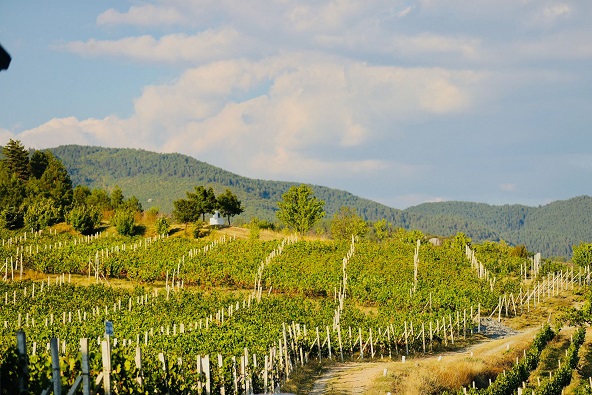
Albania, which lies just north of Greece and across the Adriatic Sea from Italy, is well suited to viticulture and has a long tradition of winemaking. Once the centre of the ancient kingdom of Illyria, it is one of the oldest wine-producing countries in Europe. According to historic accounts, the region was already producing wine by the 8th century BC. The country’s wine reputation grew under the Romans, which occupied the area from 168 BC. During the Roman and subsequent Byzantine periods, until the Middle Ages, the country’s wine production increased significantly until abruptly brought to a halt by Ottoman rule in the late 15th century. The Ottoman Empire outlawed the consumption of alcohol for 500 years – until the Albanians re-established their independence in 1912.
Along with independence came a dramatic increase in vineyard plantings. However, two world wars and an outbreak of phylloxera quashed Albania’s burgeoning wine industry.
The new era began in earnest in the 2000s.
The Land of the Eagles has four main wine regions: the coastal plains (with vineyards planted at an altitude of about 300m), central hilly region (with vineyards located around 300 to 600m above sea level), the eastern sub-mountainous region (about 800m) and the highlands (up to 1,000m).
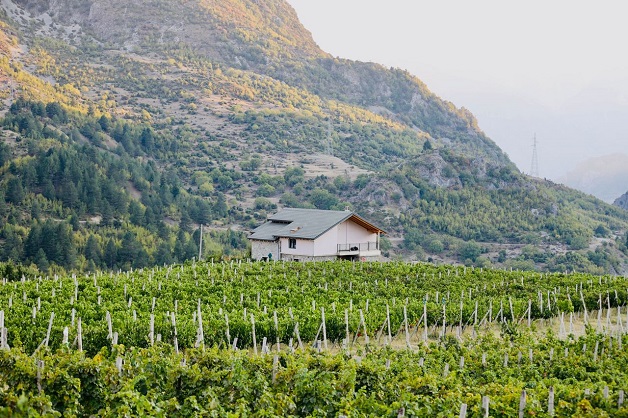
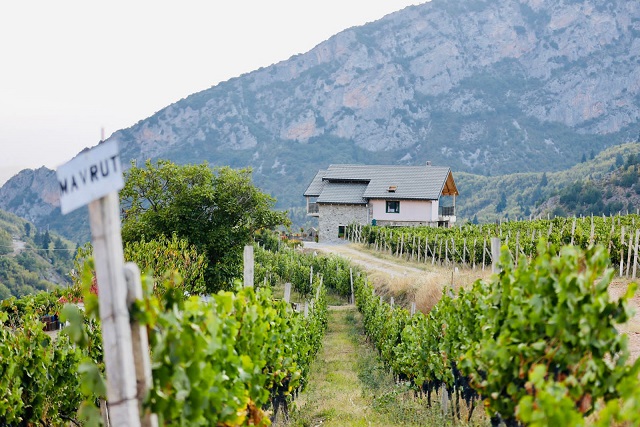
Max Mavrud is based in the Eastern Sub-Mountainous Region – with the vineyards in Leskovic and the winery in Barç, Korçe, a couple of hours’ drive away.
The panoramas from the vineyards, 750m above sea level, are breathtaking: the magnificent Melesini Mountain as the backdrop; some of the vineyards sloping at angles of 20˚ to 45˚. In some areas, terraces have been created with two to three rows of vines per terrace, spaced at 1.9-2.2m between the rows and 1m between the vines.
The climate is continental with warm southerly air blowing from May to the end of August. The area is known for its prolonged winter, with the dormant vines beaten by strong and cold winds from the east and northwest. The amount of precipitation, including melted snow, reaches about 1,300mm per year. The minimum temperatures go down to -17˚C while in the summer months of July and August they climb to 30˚C. Hail occurs about once in three years. The soils are rich in phosphorus and poor in nitrogen and potash.
Maksim is determined to show the world the potential of the region and of Albania – and has selected Mavrud as his flagship grape. He says he wants his consultant winemaker Bledar Laçi to use it to “produce high quality wines conforming to European Union standards”.
Maksim and his family now have 16ha – seven of which are filled with Mavrud.
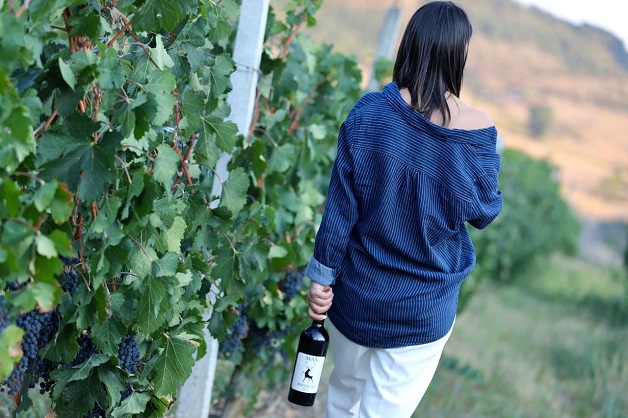
The winery, built in 2013, started with blends of Mavrud and Merlot, then moved to Mavrud varietals. This vintage they will experiment with grapes dried in crates.
Bledar told Canopy: “From the production of 2013 to the production of 2019, the methodology has been 85% Mavrud with 15% Merlot, because the idea at the beginning of production was a label, but the quantities of grapes were also small. As an oenologist, I started the collaboration in 2016 and with this idea of combining cultivars, I found and kept that methodology, ratio and combination until 2019. The quantities of grapes were small because they were new vines and I did not want more grape production than 1.5-1.8kg per vine.
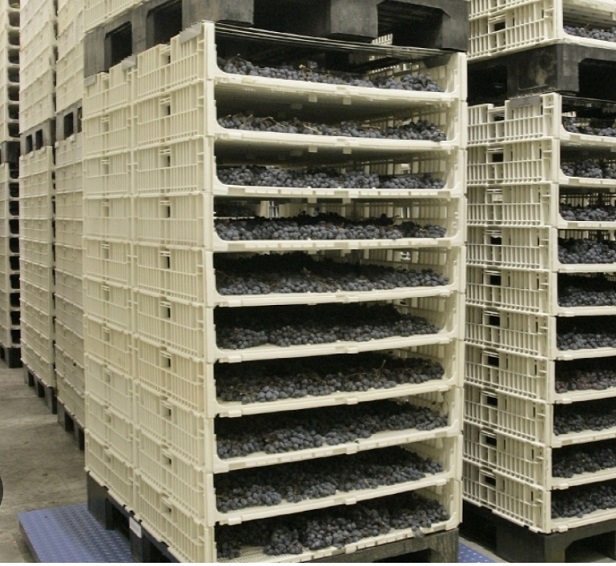
“I wanted and want to produce very high quality, potent wines for the purpose of riserva, because only in this way you can make a name both in the domestic market and in the international one. The applied fermentation techniques are classic, but only one special technique before pouring the grapes (into the destemmer) is the cryomaceration process of the grapes in crates, at a temperature of 2-3˚C for three to four days in a refrigerated room (above). This technique has been applied to all types of white and red grapes since 2017.
“From 2020 onwards, we have kept Mavrud separate and not blended – creating a 100% pure Mavrud. These wines are not yet bottled, they are in stainless-steel tanks. As for the cultivar Mavrud from 2020 onwards, it has been my idea as an oenologist to keep it simple, to show the originality of Mavrud 100% and to give it the deserved value by bringing out as much as possible the potential of the characteristics that Mavrud gives in this cool mountain climate.”
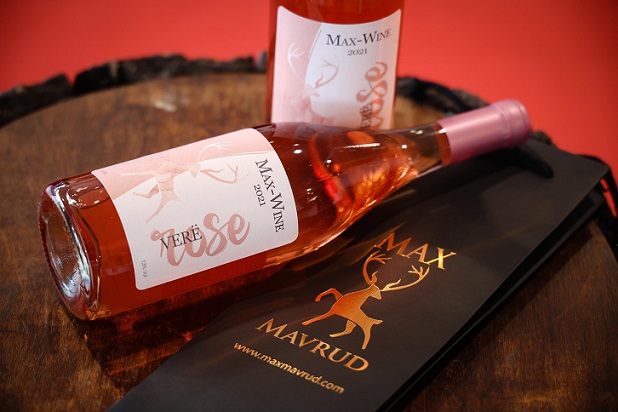
Maksim’s son-in-law Florian Peri, who is the sales director, says the grape is now famous in the Leskovik region.
As well as Mavrud and the indigenous white and black Debine – originally grown alongside Perla for brandy and raki production – Max Mavrud also grows the international varieties Pinot Noir, Syrah and Merlot. About 90% of production at Max Mavrud is Mavrud. The rosé, under the Max Wine label, comes from Debine e Zezë grapes. With only a small quantity of Syrah and Pinot Noir, the idea for now is to use them in a red wine blend with Merlot, Debine e Zezë and Mavrud “to create a new label, perhaps very exciting”.
Bledar continued: “I did micro-fermentation experiments in amounts of 3-4hl per type of wine for about three years from autochthonous cultivars to understand the potential of what kind of quality they gave. The experiments were in the simple classical technique and not with cryomaceration, white wine from Debine e Bardhë, rosé and red wine from Debine e Zezë. In all three years, very high-quality and impressive wines have been produced. I am amazed! Elegant and endlessly long, with aromas such as fruits and very fine flowers... Wines that would also be very interesting for spumante.
“In 2021, we focused on producing more rosé wine because the amount of white Debine grapes did not cover sales requirements and we thought of replacing the shortage with rosé wine from a combination of Merlot, Mavrud and black Debine cultivars. The achieved quality was highly appreciated by the consumers in the city of Korçë. The winery has further increased the surface with vineyards with international cultivars such as Syrah and Pinot Noir that are well suited to our microclimate and terrain. Although young vines have produced quality grapes and wine, this year we plan to increase the production of rosé wine by adding two new cultivars, Syrah and Pinot Noir.”
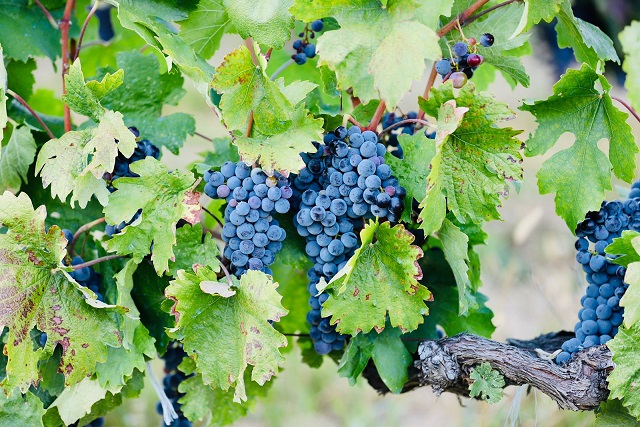
I will be going to Leskovik this October to help them with the harvest and to create a special red blend as part of my crazy #harvest2023 adventure – six wines in six countries in one vintage!
I’m told the average load of a vineyard here is 50 to 60hl/ha (similar to Bordeaux), with an average of 1.4 kg of grapes per vine. The grapes are usually picked around 23˚ Brix, with average pH of 3.45.
The pruning system is Guyot with an average of 10-14 buds per vine. But partial thinning of the grape production is done in the summer to ensure the grapes and wines are as balanced as possible. “We have no goals to have a high production for vines,” Bledar concluded.
I look forward to visiting the beautiful region and discovering the potential of Mavrud (above), Debine e Bardhë, and Debine e Zezë. Make sure you have signed up for Canopy to follow my adventure.

 English
English French
French







.png)


